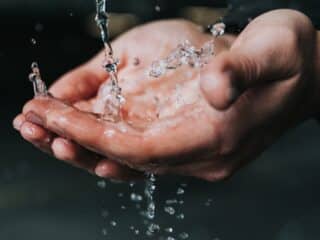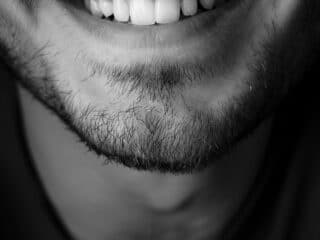
In this post, we aim to approach this dilemma in a more objective manner to see if flossing is better than waterpiking or vice versa.
Flossing
Brushing is effective in getting rid of the plaque that covers the surface of our teeth. But it is not useful in removing food that is stuck between our teeth or even below the gumline. That’s where flossing comes into the picture.
According to dental dorks in flossing, all you need is a thin piece of dental floss string, which is small enough to pass between your teeth and remove all the food and plaque that your toothbrush can’t normally reach. Using the string, you can gently scrape the surface of your teeth up and down as well as below the gumline and eventually remove all the food particles and plaque from those areas.
Pros
Flossing presents a slew of positives such as:
- It is an efficient way of removing excess food and plaque from your teeth
- Dental floss is quite affordable and can easily be bought from pharmacies or general stores.
- It is simple, quick, portable and can be used just about anywhere in the world.
Cons
However, there are a couple of lows that come with flossing as well, including:
- If not done regularly, then flossing can cause minor bleeding
- Difficult to reach some of the areas of the mouth
- Floss can be difficult to handle at times by people
- Causing or worsening gum sensitivity
However, in spite of these cons, it is still crucial to floss on a regular basis. If you find flossing to be painful or difficult, then go see your dentist to ensure they provide you the correct and appropriate practices.
Waterpiking
Waterpiking or water flossing is a different method compared to that of traditional flossing.
Waterpiking is a process that uses a special machine capable of directing a stream of water into the mouth and gums. Instead of scraping the teeth, waterpiking uses pressure to massage the gums to push the plaque and food particles away from the teeth.
Pros
- Waterpiking is easy to use, including those with braces, or any other type of dental work such as permanent or temporary bridges.
- The massaging action can also help improve gum health as well as reach areas that conventional flossing could never reach.
Cons
As with traditional flossing, water flossing as its share of negatives such as:
- Waterpiking is expensive to purchase
- Needs plenty of storage space.
- It is difficult to use anywhere that doesn’t have electricity and water.
Bottom Line
Which of these two flossing methods is right for you is a matter of preference. It is like to an endless debate to which we may never know the answer to. But one thing is certainly clear; we have to keep our teeth and gums clean of plaque and food particles. If you still experience any type of pain after flossing, make sure to fix that toothache with this dentist in Oakbrook Terrace.
According to a study published in the Journal of Clinical Dentistry, researchers compared the performances of a water flosser to a string floss in conjunction with a manual toothbrush. The results found that the group using the waterpik had a 74.4% reduction in plaque as compared to a 57.7% reduction in plaque for the group that used the string floss.
Some other studies found that people who use waterpiking had a greater reduction in gum bleeding and gingivitis as compared to those who use a string floss.
Despite this, many dentists and hygienists still recommend string flossing to their patients, either instead or in addition to water flossing.
Author Bio: Laraib Shahzad is a content marketer who specializes inghost blogging, email marketing campaigns. She worked with iconic brands like AT&T and other top advertising agencies. She helped hundreds of business owners to define their ideal clients and create a marketing message that speaks directly to those clients.




